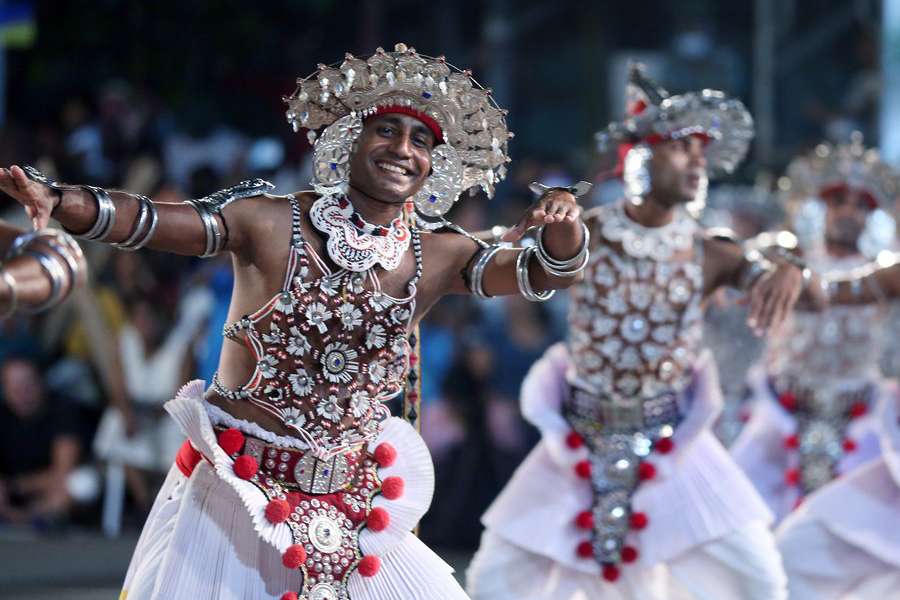Sri Lanka, recognized as the “Wonder of Asia,” is a multicultural country with a rich natural and cultural heritage. The country showcases a variety of folk dances, and there are three classical dance traditions in Sri Lanka that differ in costume, rhythm, and body movements. The three main classical dances of Sri Lanka include:
Traditional Dances of Sri Lanka
Kandyan Dances
The Kandyan dance form, named after the former royal capital of Sri Lanka, Kandy, is considered the national dance of Sri Lanka. It is characterized by intricate footwork, graceful hand gestures, and expressive facial expressions. The dancers skillfully portray various characters and stories from the ancient Ramayana epic through their movements. This ancient dance style originated during the reign of the Kandyan kings and is now performed at a distance of 120km from the current capital, Colombo.
The dance is a narration of stories from the ancient Indian epic Ramayana and involves dancers impersonating the movements of various animals such as elephants and peacocks. The dance is accompanied by traditional music, including drums, flutes, and cymbals, which create a rhythmic and energetic atmosphere. The dancers’ costumes are elaborate and vibrant, reflecting the traditional attire of the Kandyan region. The rhythm, known as ‘Gata Beraya,’ accompanies the dancers’ movements. The dancers’ attire is a notable aspect of the performance, with men wearing skirt-like dresses adorned with exclusive silver regalia, stunning headgear, and silver bangles on their arms and ankles.
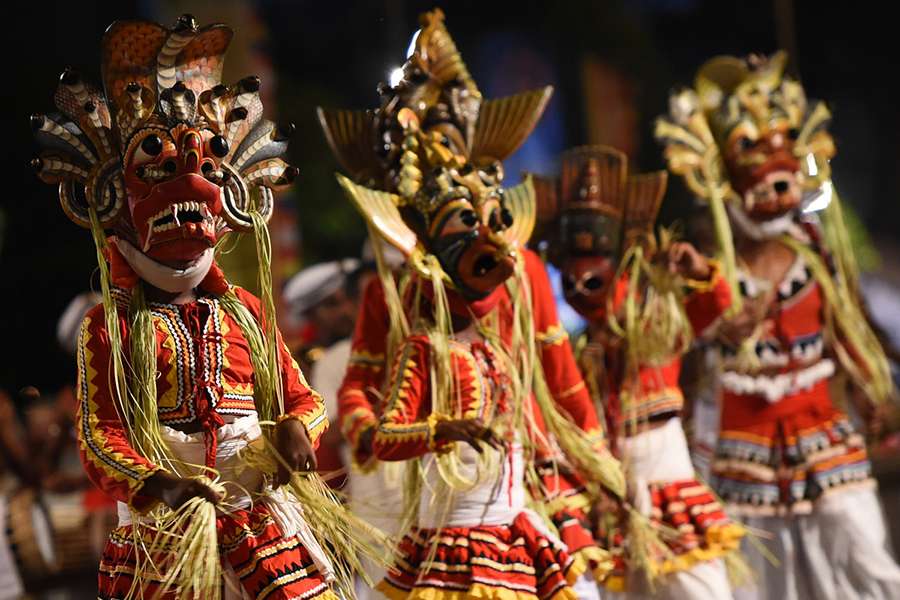
Pahatha Rata Natum
Pahatha Rata Natum, also known as Low Country Dance, is a traditional dance form from the coastal regions of Sri Lanka. It is characterized by its lively and energetic movements, vibrant costumes, and rhythmic music.
Pahatha Rata Natum incorporates a variety of dance styles and techniques, including quick footwork, graceful hand gestures, and acrobatic movements. The dancers often perform in groups, showcasing their coordination and synchronization.
The dance is accompanied by traditional instruments such as drums, flutes, and cymbals, which create a lively and festive atmosphere. The costumes worn by the dancers are colorful and elaborate, reflecting the cultural heritage of the low country region.
Pahatha Rata Natum is a celebration of the coastal culture of Sri Lanka and is performed during various festive occasions and cultural events. It is a vibrant and joyful dance form that captivates audiences with its dynamic movements and rhythmic beats.

Sabaragamuwa Dance
Sabaragamuwa Dance is a traditional dance form originating from the Sabaragamuwa province of Sri Lanka. It is known for its graceful and elegant movements, intricate footwork, and expressive hand gestures.
The dance is performed by both male and female dancers, who often wear colorful costumes adorned with traditional ornaments. The dancers skillfully portray various characters and stories from Sri Lankan folklore and mythology through their movements.
Sabaragamuwa Dance is accompanied by traditional music, including drums, flutes, and string instruments, which create a melodic and rhythmic backdrop for the performance. The dancers’ movements are synchronized with the music, creating a harmonious and captivating experience.
The dance form showcases the cultural heritage of the Sabaragamuwa region and is often performed during cultural festivals and special occasions. It is a visual delight that combines artistry, storytelling, and music to create a memorable performance.
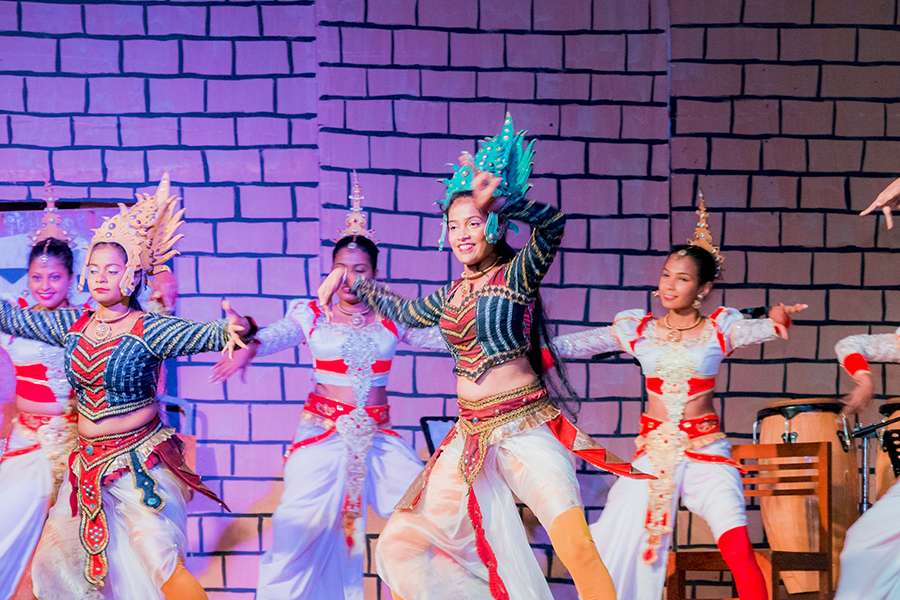
Devil Dances
Devil Dances, also known as “Yak Keliya” or “Deva Nrithya,” are a unique and vibrant form of traditional dance in Sri Lanka. These dances are performed to invoke and pay homage to various deities and spirits in Sri Lankan folklore and belief systems.
Devil Dances are characterized by their energetic and dynamic movements, elaborate costumes, and distinctive masks. The dancers, often skilled performers, wear intricate and colorful costumes that represent different characters and entities. The masks, crafted with great detail, depict various mythological figures, demons, and animals.
The performances are accompanied by traditional music, including drums, flutes, and other traditional instruments. The rhythmic beats and melodies enhance the dramatic and intense nature of the dance.
Devil Dances are not only a form of entertainment but also hold religious and cultural significance. They are believed to bring blessings, ward off evil spirits, and bring prosperity to the community. These dances are commonly performed during religious festivals, cultural events, and rituals.
Overall, Devil Dances are a fascinating and captivating form of dance that showcases the rich mythology, folklore, and spiritual beliefs of Sri Lanka.

Folk Dances
Folk Dances in Sri Lanka are a diverse and colorful form of traditional dance that reflects the country’s rich cultural heritage. These dances are performed to celebrate various occasions, including weddings, harvest festivals, and other cultural events.
Folk Dances are characterized by their lively and energetic movements, colorful costumes, and upbeat music. The dancers often perform in groups, showcasing their coordination and synchronization.
The dances vary depending on the region of Sri Lanka, with each region having its unique style and techniques. For example, the “Udarata Natum” from the central region of Sri Lanka is known for its graceful movements, while the “Pahatharata Natum” from the coastal region is characterized by its lively and energetic movements.
Folk Dances are accompanied by traditional music, including drums, flutes, and other instruments. The music creates a rhythmic and festive atmosphere, enhancing the dancers’ movements and adding to the overall experience.
Folk Dances in Sri Lanka are a vibrant and joyful celebration of the country’s cultural diversity and traditions. They are a visual delight that combines artistry, music, and dance to create a memorable performance.
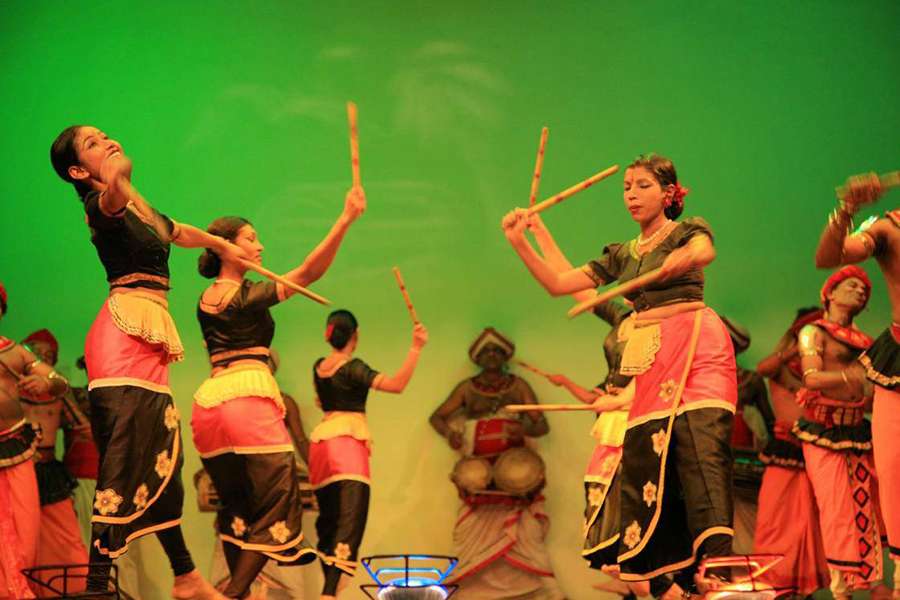
Dance Drama
Dance Drama, also known as “Nritha Natya,” is a unique and captivating form of traditional dance in Sri Lanka. This dance form combines elements of storytelling, music, and dance to create a visually stunning and emotionally engaging performance.
Dance Drama often portrays stories from Sri Lankan mythology and folklore, with the dancers skillfully portraying various characters and emotions through their movements. The performances are often accompanied by traditional music, including drums, flutes, and other instruments, which create a melodic and rhythmic backdrop for the dance.
The dancers’ costumes are elaborate and vibrant, reflecting the cultural heritage of Sri Lanka. The costumes often feature intricate designs and embellishments, adding to the visual appeal of the performance.
Dance Drama is a popular form of entertainment in Sri Lanka, with performances held during cultural festivals and special occasions. It is a celebration of the country’s rich cultural heritage and traditions, showcasing the artistry and creativity of Sri Lankan dancers and musicians.
Dance Drama is a mesmerizing and emotionally engaging form of dance that combines storytelling, music, and dance to create a unique and memorable performance.
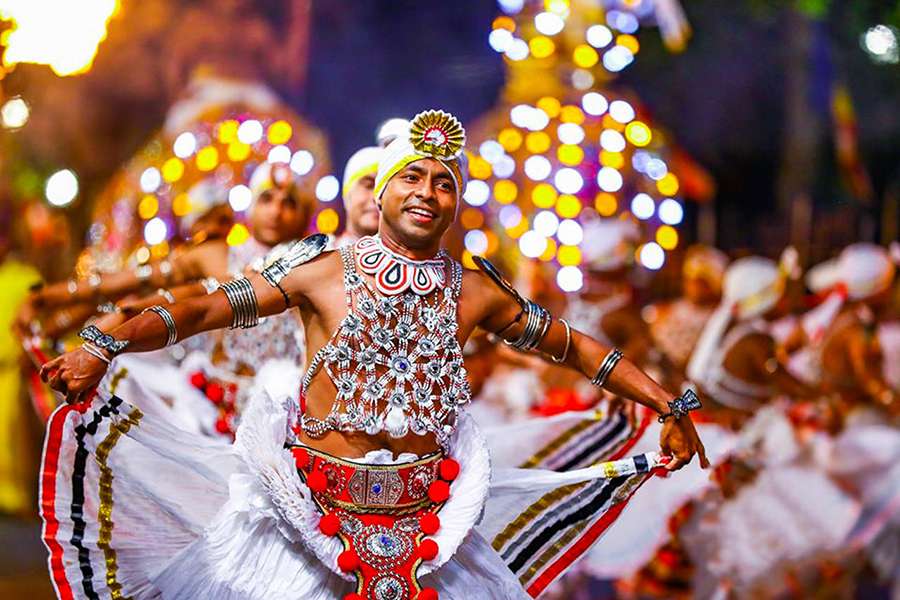
The Historical Evolution of Dance in Sri Lanka
Dance has been an integral part of Sri Lankan culture and history for thousands of years. The earliest evidence of dance in Sri Lanka dates back to the 3rd century BCE, during the reign of King Devanampiya Tissa, who was a patron of the arts.
Over the centuries, dance in Sri Lanka has evolved and diversified, with each region of the country developing its unique style and techniques. The three main classical dance forms in Sri Lanka are Kandyan dance, Low Country dance, and Sabaragamuwa dance, each with its distinctive characteristics and cultural significance.
In addition to classical dance forms, Sri Lanka is also home to a wide variety of folk dances, each reflecting the traditions and customs of different communities across the country. These dances are performed during various occasions, including weddings, harvest festivals, and other cultural events.
Dance in Sri Lanka has also been influenced by various external factors, including Indian classical dance forms such as Bharatanatyam and Kathak. These influences have contributed to the development of new dance styles and techniques in Sri Lanka.
Dance in Sri Lanka is a vibrant and dynamic form of art that reflects the country’s rich cultural heritage and traditions. It continues to evolve and thrive, with new generations of dancers and choreographers pushing the boundaries of traditional dance forms and creating new and innovative works.

